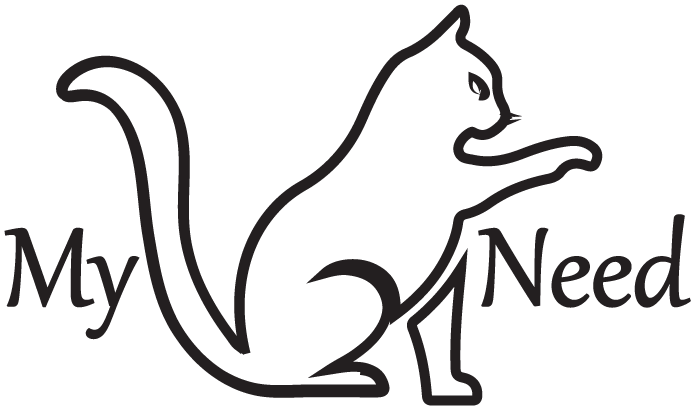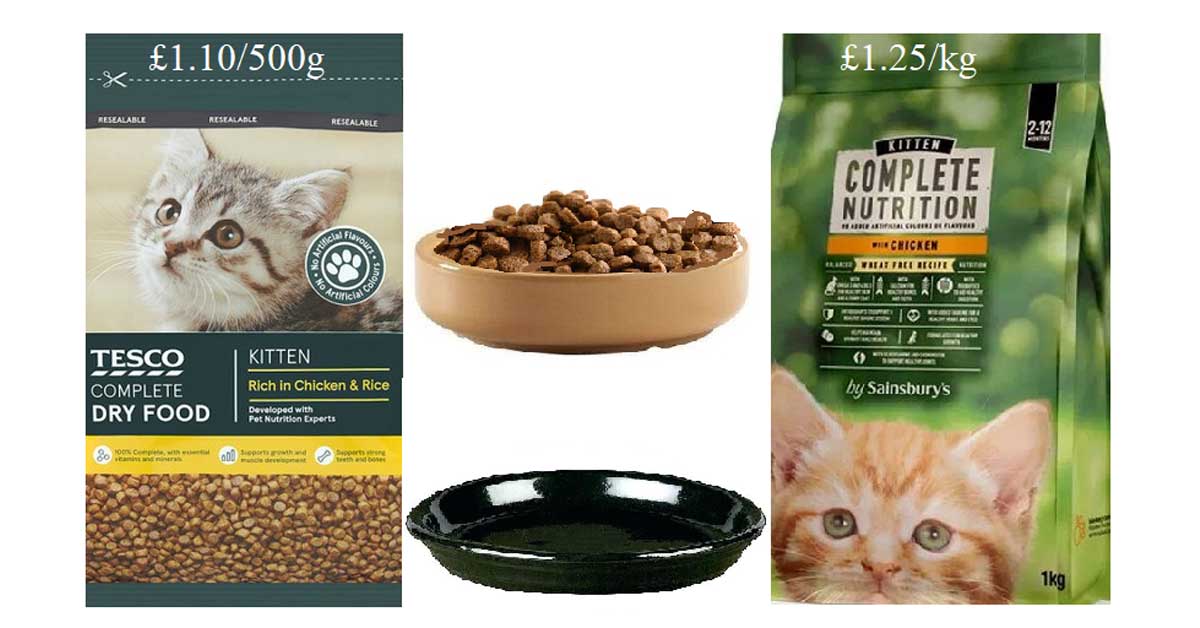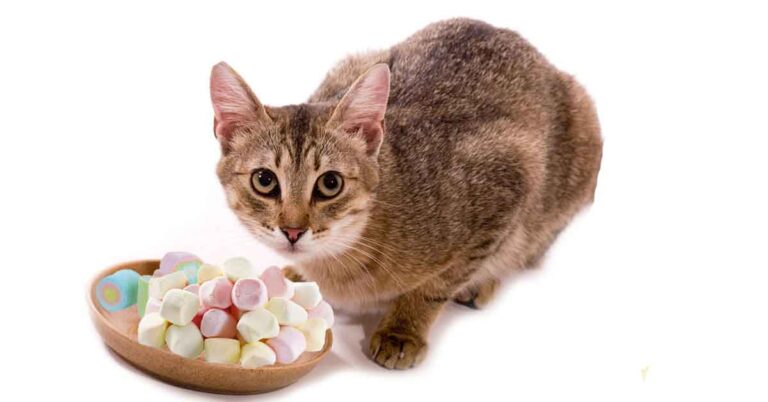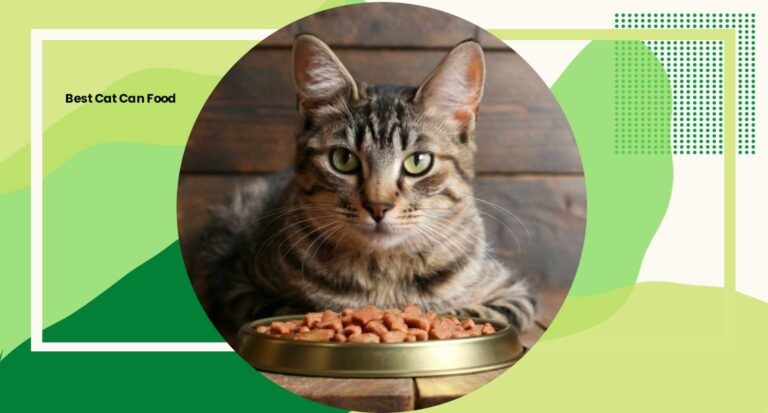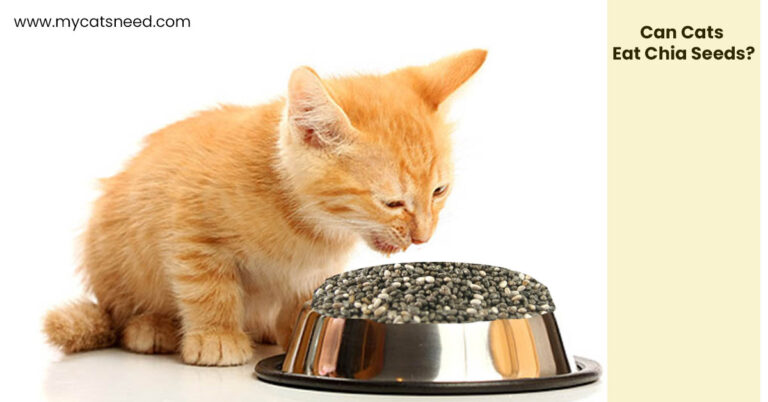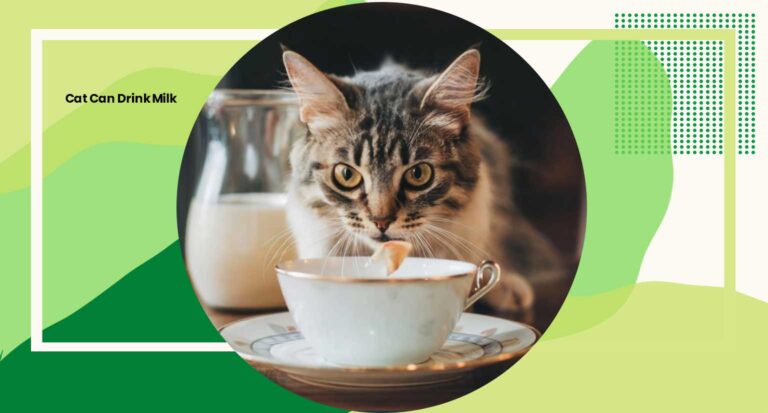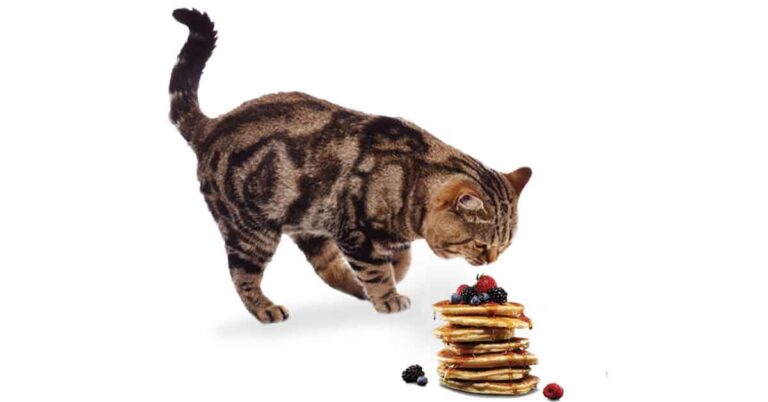Best Cat Food For Hedgehogs
For new and experienced hedgehog owners alike, one question often prevails – What’s the best cat food for hedgehogs ? This question isn’t surprising. Despite being small mammals, hedgehogs have unique nutritional needs that must be catered to for them to live a healthy life. Their wild counterparts feast on a varied diet primarily composed of live insects, providing them with high protein content and essential nutrients. But what about our pet hedgehogs? Can they thrive on the same natural diet? Or do they require a different type of food?
Many hedgehog owners have found dry cat food to be a good choice, acting as a staple food in their pet’s diet. But with so many options on the market, identifying the best cat food for your spiky friend can be challenging. This guide aims to demystify the process, diving deep into the main ingredients you should look for and the best brands to consider. Whether you’re a fan of Iams Proactive Health Adult, Blue Buffalo, or Chicken Soup ranges, we’ve got you covered.
Dry Cat Food Vs Wet Cat Food: Weighing the Options for Your Hedgehog
When it comes to selecting the best cat food for hedgehogs, the choice often boils down to dry cat food versus wet cat food. Both options have their advantages, but which one stands as the best choice?
Dry cat food, often known as kibble, has been a popular choice among hedgehog owners in recent years. This type of food offers the perfect combination of convenience and nutritional value. The small kibble size is easy for hedgehogs to manage, and dry food generally has a high protein content, aligning with a hedgehog’s natural diet. Brands like Blue Buffalo offer high-quality cat food that’s rich in first ingredient proteins like real chicken and chicken meal, with brown rice and sweet potatoes for balanced nutrition.
On the other hand, wet cat food provides a great source of hydration, important fatty acids, and an appetizing texture that many hedgehogs love. It’s often packed with real meat as the primary ingredient, offering a high protein level that meets the nutritional needs of small mammals. However, it’s worth noting that wet food should be offered in very small amounts due to its high fat content, which may lead to obesity in hedgehogs if not carefully monitored.
In essence, a mix of both dry and wet cat food can be a good option, ensuring your hedgehog gets a varied diet that promotes good health and overall well-being.
Unveiling the Benefits of Dry Cat Food for Hedgehogs
Dry cat food brings a plethora of advantages to the table for hedgehog owners. One of its main strengths is its high protein content. Brands such as Solid Gold and Iams Proactive Health Adult, for instance, offer dry food with real chicken as the first ingredient, guaranteeing a protein-rich diet similar to what wild hedgehogs enjoy. Moreover, the presence of ingredients like chicken meal and chicken fat further supplements the protein and fatty acids in the food, key components in a hedgehog’s diet.
Dry food, particularly the smaller kibble variety, is also an excellent choice for supporting a hedgehog’s natural behaviors. The hard foods allow hedgehogs to exercise their jaws and teeth, contributing to good dental health. Plus, the convenience of dry food cannot be overstated. It’s non-perishable and easy to store, making it the perfect choice for busy pet owners.
Additionally, dry cat food often comes fortified with essential nutrients. Vitamins like vitamin E, as well as minerals, are frequently added to the food mix to ensure your pet hedgehog receives a balanced diet, vital for maintaining good health and longevity.
In short, dry cat food is a reliable and convenient option that packs a powerful nutritional punch for your hedgehog.
The Upside of Wet Cat Food for Your Hedgehog’s Diet
Wet cat food, despite being less common in a hedgehog’s diet, holds its own advantages. For starters, its moisture content is considerably higher than dry food. This means that hedgehogs, which generally drink less water, can get additional hydration from their food – a boon for their overall health.
In terms of nutrition, wet cat food is often high in animal proteins. Products from leading brands like Chicken Soup for the Soul Pet Food and Blue Buffalo feature real meat as the primary ingredients, be it chicken, turkey, or fish. This high protein content aligns perfectly with a hedgehog’s nutritional needs, mimicking their natural diet of insects, small animals, and other protein-rich sources.
Another plus is that wet food is typically more palatable than dry food. The rich flavors and textures can make mealtime exciting for your pet, encouraging them to try new foods. This variety is beneficial for hedgehogs, as it prevents them from becoming too selective or fussy about their meals.
Lastly, wet food is easier to chew and digest than dry food, making it an excellent option for baby hedgehogs, elderly ones, or those with dental issues.
Therefore, while wet cat food might require more careful storage and portion control due to its higher fat content, it remains a good choice for supplementing your hedgehog’s diet.
Decoding the Nutritional Needs of Hedgehogs: What Makes a Balanced Diet?
Just like any other pet, hedgehogs require a balanced diet that caters to their unique nutritional needs. While wild hedgehogs thrive on a diet primarily composed of insects, providing a similar diet for pet hedgehogs can be a challenge. Here’s where the best cat food steps in, making it easy to ensure your pet gets the essential nutrients it needs.
A healthy hedgehog diet should be high in protein. The protein sources can be varied, but animal-based proteins such as chicken meal, turkey meal, and fish oil are typically a good choice as they mimic a hedgehog’s natural diet. Look for cat food where these ingredients feature prominently in the ingredient list, indicating a high protein level. Brands like Solid Gold, Iams Proactive Health Adult, and Blue Buffalo are well-known for their high-quality, protein-rich cat foods.
Besides protein, hedgehogs also require a certain level of fat in their diet. However, the fat levels should be controlled as too much can lead to obesity. The fat content in cat food, especially the wet variety, is usually sufficient to meet a hedgehog’s needs without going overboard.
Fiber is another important element in a hedgehog’s diet. Brown rice, sweet potatoes, and chicory root are natural sources of fiber found in many cat food brands. Fiber aids in digestion, making sure your pet hedgehog can process and extract the maximum nutritional value from their food.
In addition to these macronutrients, hedgehogs require a variety of essential vitamins and minerals for proper nutrition. Many high-quality cat foods are fortified with these, providing a comprehensive diet that ensures the healthy life of your pet.
Lastly, remember to always provide your hedgehog with fresh water, regardless of whether they’re eating dry or wet food. Hydration is vital for their health and wellbeing.
To summarize, a well-balanced hedgehog diet should be high in protein, moderate in fats, rich in fiber, and supplemented with necessary vitamins and minerals. By choosing the best cat food that meets these criteria, you’re on your way to raising a healthy, happy hedgehog.
Protein Level and Sources: The Key to a Nutrient-Rich Hedgehog Diet
When it comes to hedgehogs, protein takes the center stage in their nutritional needs. In the wild, hedgehogs are insectivores, feeding on a variety of insects that are rich in protein. This high-protein natural diet must be mimicked as closely as possible for pet hedgehogs to ensure they get their essential nutrients.
But where can these proteins come from when considering cat food? Real meat, such as chicken or turkey, should ideally be the first ingredient in the cat food you choose. This assures that the food is high in animal proteins, closely emulating the natural diet of hedgehogs. Many cat food brands, such as Solid Gold and Iams Proactive Health Adult, prioritize real meat as their primary ingredient.
Additionally, meat meals like chicken meal or turkey meal are a concentrated source of animal protein, and their inclusion in cat food increases its overall protein content. Similarly, fish oil is another excellent source of animal protein and provides the added benefit of omega-3 fatty acids, which are beneficial for a hedgehog’s skin and coat health.
While grains and vegetables should not be the main source of protein in your hedgehog’s diet, they can supplement the animal proteins. Ingredients such as pea protein and potato protein can contribute to the overall protein level in the food.
In conclusion, ensuring a high protein content from varied sources, primarily animal-based, is crucial for meeting the nutritional needs of your hedgehog. This approach ensures they receive the essential amino acids necessary for their growth, maintenance, and overall health.
Fat Content and Ratio: Striking the Right Balance in Your Hedgehog’s Diet
While protein is a crucial part of a hedgehog’s diet, fat plays an equally essential role. Fats provide a concentrated source of energy and help in the absorption of certain vitamins. However, too much fat can lead to weight gain and obesity in hedgehogs, making it crucial to monitor the fat content and ratio in their diet.
When selecting cat food for your hedgehog, look for options with a moderate fat content. The fat should ideally come from high-quality animal sources like chicken fat or fish oil. This kind of fat is more easily digestible and provides omega-3 and omega-6 fatty acids, essential for maintaining your hedgehog’s skin and coat health.
Most high-quality cat foods, such as those from Blue Buffalo or Solid Gold, list the percentage of crude fat on their packaging. As a rule of thumb, aim for a diet where fat makes up around 5-15% of the total caloric content. The precise amount depends on your hedgehog’s age, size, and activity level. Baby hedgehogs, for example, may require a higher fat content to support their rapid growth, whereas adult hedgehogs might need less to prevent weight gain.
In essence, while fat is an essential part of your hedgehog’s diet, it’s a component that requires careful balance. Too little can deprive your pet of vital nutrients, and too much can lead to health problems. Therefore, opting for high-quality cat food that provides a controlled and moderate amount of animal-based fat is the best way to ensure a balanced diet for your pet hedgehog.
Essential Nutrients and Fatty Acids: The Building Blocks of a Healthy Hedgehog Diet
Apart from high-quality protein and a balanced amount of fat, there are other nutrients your hedgehog needs for optimal health. These include a variety of vitamins, minerals, and fatty acids, all of which play crucial roles in maintaining various bodily functions.
Vitamins like vitamin E, for instance, are potent antioxidants that protect your hedgehog’s cells from damage. Minerals, on the other hand, support a range of functions from bone health to nerve function. Most high-quality cat food brands fortify their products with these essential nutrients, providing a comprehensive diet for your hedgehog.
Fatty acids, particularly omega-3 and omega-6, are another essential part of your hedgehog’s diet. These fats support a healthy skin and coat, promote brain health, and contribute to the overall well-being of your pet. Ingredients like fish oil, chicken fat, and flaxseed are rich in these fatty acids and should be present in the cat food you choose for your hedgehog.
Remember, the best cat food for hedgehogs should offer a balanced blend of these nutrients. By checking the ingredient list and nutritional information on the packaging, you can ensure you’re providing your pet with a diet that meets all their nutritional needs. Brands like Blue Buffalo and Iams Proactive Health Adult offer high-quality cat food, fortified with essential nutrients and rich in animal-based fatty acids, making them a sound choice for your hedgehog’s diet.
Ingredients to Look For: Decoding the Label for Your Hedgehog’s Health
When it comes to choosing the best cat food for your hedgehog, knowing which ingredients to look for can make all the difference. The ingredient list on the packaging can seem like a daunting mix of names, but once you understand what each provides, you’ll be well-equipped to make the best choice for your pet.
Real Meat: Look for cat food where the first ingredient is a real meat source, such as chicken or turkey. This ensures that the food is high in animal protein, which aligns with a hedgehog’s natural diet. Fish oil is another valuable addition, being a rich source of animal protein and beneficial omega-3 fatty acids.
Meat Meal: Ingredients like chicken meal or turkey meal are concentrated sources of animal protein and are an excellent supplement to real meat in the food. These meals, made from dehydrated and ground meat, contribute to the overall protein level in the food.
Fiber: Fiber aids in digestion and can help maintain a healthy weight in your hedgehog. Look for natural sources of fiber like brown rice, sweet potatoes, and chicory root.
Healthy Fats: Moderate amounts of fat, primarily from animal sources like chicken fat, are essential for providing energy and supporting vitamin absorption. Remember to check the fat ratio to ensure it’s not excessively high, which could lead to weight gain in your hedgehog.
Vitamins and Minerals: High-quality cat food is often fortified with essential vitamins and minerals, such as vitamin E and various minerals that support a range of bodily functions. Check the nutritional information on the packaging to ensure these essentials are included.
Natural Ingredients: Avoid cat food with artificial flavors, colors, or preservatives. Brands that emphasize natural ingredients are generally the best choice.
By focusing on these ingredients when selecting cat food for your hedgehog, you can ensure they receive a balanced diet that mirrors their natural dietary habits, setting them up for a long, healthy life.
First Ingredient: Real Meat – The Essential Source of Protein
The importance of protein in a hedgehog’s diet cannot be overstated. Given their insectivorous nature, hedgehogs require a diet rich in animal protein. Thus, when choosing the best cat food for hedgehogs, the first ingredient listed should ideally be real meat.
But why real meat? Real meat, such as chicken, turkey, or fish, is a rich source of high-quality protein. This protein closely emulates the natural diet of hedgehogs, ensuring they receive the essential amino acids they need for growth, maintenance, and overall health. Moreover, real meat is more palatable, encouraging your hedgehog to eat and enjoy their food.
Several high-quality cat food brands like Blue Buffalo, Iams Proactive Health Adult, and Solid Gold prioritize real meat as their primary ingredient. Whether it’s deboned chicken, turkey meal, or salmon, these sources provide excellent, high-quality protein for your hedgehog.
Remember, a hedgehog’s diet should be a reflection of their natural diet in the wild, which is rich in animal protein. Therefore, choosing cat food with real meat as the first ingredient is a step in the right direction towards ensuring your hedgehog’s optimal health and well-being.
Chicken Meal vs Chicken Fat: Understanding the Difference for Your Hedgehog’s Diet
When deciphering cat food labels for your hedgehog’s dietary needs, you might come across ingredients like chicken meal and chicken fat. While both originate from the same source, their nutritional contribution and purpose within the food differ significantly.
Chicken Meal: This ingredient is essentially dehydrated and ground chicken, including both the meat and bones. The process of dehydration increases the concentration of protein in the chicken meal, making it a potent source of animal protein for your hedgehog. Including chicken meal in your pet’s diet ensures they get plenty of protein, which aligns with their natural, insect-rich diet.
Chicken Fat: This, on the other hand, is primarily a source of fat. High-quality cat food often uses chicken fat as it’s easily digestible and a natural source of essential fatty acids. These fatty acids are crucial for your hedgehog’s skin and coat health. However, fat content should be monitored as excessive fat can lead to weight gain and related health issues in hedgehogs.
When choosing the best cat food for your hedgehog, look for options that contain both chicken meal and chicken fat. Brands like Blue Buffalo and Solid Gold, for instance, often include both these ingredients, providing a good balance of high-quality protein and beneficial fats.
Understanding the difference between these ingredients and their role in your hedgehog’s diet allows you to make informed choices that contribute positively to your pet’s overall health.
Healthy Grains and Vegetables: The Supplemental Role in Your Hedgehog’s Diet
While hedgehogs thrive on a diet rich in animal protein, the inclusion of certain grains and vegetables can provide valuable supplemental nutrients. These ingredients can contribute to a balanced diet, ensuring your hedgehog receives a variety of nutrients necessary for their well-being.
Grains: Grains such as brown rice can be a beneficial part of a hedgehog’s diet. Brown rice is a healthy source of dietary fiber, which aids digestion and helps maintain a healthy weight. It also provides essential B vitamins and minerals like iron and magnesium. However, grains should not form the majority of the diet, and grain-free cat food options can also be suitable for hedgehogs, especially those with grain sensitivities.
Vegetables: Certain vegetables can also supplement your hedgehog’s diet. Sweet potatoes, for instance, provide dietary fiber and are rich in vitamins like beta-carotene (which converts to vitamin A), vitamin C, and vitamin B6. However, like grains, vegetables should not be the main ingredient and should only supplement the high protein content from animal sources.
While searching for the best cat food for hedgehogs, aim to find options that incorporate these healthy grains and vegetables but prioritize high-quality animal protein. Brands like Solid Gold and Blue Buffalo often strike this balance well, offering foods with real meat as the primary ingredient, supplemented with beneficial grains and vegetables.
Remember, although grains and vegetables can offer additional nutritional value, your hedgehog’s diet should primarily focus on animal protein, with these ingredients playing a supplementary role.
Popular Cat Food Brands for Hedgehogs: High-Quality Options for Your Pet’s Nutrition
Finding the right food for your hedgehog can feel like a daunting task with countless brands and types of food to choose from. However, several cat food brands stand out as particularly well-suited for hedgehogs, thanks to their high-quality ingredients and balanced nutritional profiles. Here are a few popular choices:
Blue Buffalo: Known for their emphasis on natural ingredients, Blue Buffalo offers cat food with real meat as the first ingredient, supplemented by healthy grains, fruits, and vegetables. The brand’s cat food is also free from artificial preservatives and flavors, making it a good choice for your hedgehog.
Iams Proactive Health Adult: This brand offers cat food designed to support overall health, with a blend of real meat, grains, and vegetables. Iams Proactive Health Adult food also provides a balanced fat content, making it suitable for your hedgehog’s dietary needs.
Solid Gold: Solid Gold’s cat food is grain and gluten-free, making it a great option for hedgehogs with food sensitivities. Real meat is the primary ingredient, and the food is enriched with superfoods for added nutritional value.
While these brands offer high-quality cat food options for your hedgehog, it’s important to monitor your pet’s reaction when introducing new foods. Always start with a very small amount and gradually increase it if no adverse reactions are observed. Consult with your local pet store or a veterinarian to make the best choice for your pet hedgehog’s nutritional needs.
Blue Buffalo: High-Quality Ingredients for Your Hedgehog’s Optimal Nutrition
Blue Buffalo is a well-respected pet food brand that puts a strong emphasis on using natural ingredients in their products. This commitment to quality makes it a popular choice for hedgehog owners in search of the best cat food for their pets.
The primary ingredient in Blue Buffalo cat food is real meat, such as deboned chicken or turkey, providing a high-quality protein source that aligns well with a hedgehog’s natural diet. These meat sources, combined with chicken meal, deliver a high protein content that contributes to your hedgehog’s growth and maintenance needs.
But Blue Buffalo goes beyond simply providing protein. Their cat food is enriched with healthy grains like brown rice, providing your hedgehog with essential fiber for good digestive health. It also incorporates a variety of fruits and vegetables, including sweet potatoes, which offer additional nutrients and antioxidants.
Additionally, Blue Buffalo cat food contains a balanced blend of omega-3 and omega-6 fatty acids from sources such as chicken fat and flaxseed. These fatty acids support healthy skin and a shiny coat, while also promoting overall well-being in your hedgehog.
With no artificial preservatives, colors, or flavors, Blue Buffalo offers a high-quality, natural diet for your hedgehog. Remember, as with any new food, start by introducing it slowly into your hedgehog’s diet to monitor for any adverse reactions.
Iams Proactive Health Adult: Balanced Nutrition for Your Hedgehog’s Health
Iams Proactive Health Adult is another reputable brand favored by hedgehog owners for its balanced, nutrient-rich cat food. It’s designed to support overall health in pets, making it an excellent choice for your hedgehog.
With real meat as the first ingredient, Iams cat food provides the high-quality protein that your hedgehog needs. The brand uses wholesome sources such as chicken and turkey to mimic the natural diet of hedgehogs and deliver the essential amino acids they require.
Beyond protein, Iams cat food also includes a selection of healthy grains and vegetables. Ingredients like grains provide essential fiber for digestion, while vegetables add an array of beneficial nutrients to your hedgehog’s diet. However, these ingredients are carefully balanced to ensure that high-quality animal protein remains the focus of the diet.
Moreover, Iams Proactive Health Adult cat food maintains a balanced fat content, utilizing chicken fat as a healthy source of essential fatty acids. These fatty acids support a range of bodily functions, including skin and coat health.
Overall, Iams Proactive Health Adult offers a well-rounded diet that can support the unique nutritional needs of your hedgehog. As always, introduce any new food slowly and monitor your hedgehog’s reaction to it. If it agrees with your hedgehog, Iams could be a solid part of their regular diet.
Solid Gold: Grain-Free Nutrition for Your Hedgehog’s Diet
Solid Gold stands out as a premium choice among pet foods, known for its commitment to providing high-quality, natural ingredients. For hedgehog owners looking for a grain-free cat food option, Solid Gold may be the perfect choice.
Protein is the star of the show in Solid Gold’s cat food, with real meat always listed as the first ingredient. Whether it’s chicken, salmon, or quail, these meats deliver high-quality protein that closely mirrors the nutritional profile of a hedgehog’s natural diet. Paired with this, ingredients like chicken meal further bolster the protein level, ensuring your hedgehog receives the protein they need for healthy growth and maintenance.
Although Solid Gold cat food is grain-free, it’s far from lacking in supplemental nutrients. The brand incorporates a proprietary blend of superfoods into their cat food, including ingredients like sweet potatoes, pumpkin, and blueberries. These superfoods provide a wide range of vitamins, minerals, and antioxidants, promoting a strong immune system and overall health in your hedgehog.
Solid Gold also recognizes the importance of healthy fats, utilizing chicken fat as a prime source of essential fatty acids. These fatty acids contribute to your hedgehog’s skin health, promote a shiny coat, and support overall well-being.
If you’re looking for a grain-free, high-quality cat food for your hedgehog, Solid Gold is worth considering. Always remember to introduce new foods gradually, watching for any adverse reactions in your hedgehog.
Alternatives and Supplements to Cat Food
While high-quality cat food can form a great base for your hedgehog’s diet, variety is key to providing a well-rounded nutritional profile. Alternatives and supplements to cat food can be used to introduce new flavors, textures, and nutrients into your hedgehog’s diet, making mealtime an enriching and enjoyable experience for them.
Commercial hedgehog food, live insects, and certain fruits and vegetables can supplement a cat food-based diet, adding much-needed variety and helping to ensure that your hedgehog receives all the nutrients it needs.
Always remember, any new food should be introduced gradually and in small amounts, with careful monitoring for any signs of adverse reactions. It’s also crucial to ensure that any alternatives or supplements are safe and appropriate for your hedgehog’s specific nutritional needs. Consulting with a veterinarian or a knowledgeable pet store professional can provide further guidance in this area.
Commercial Hedgehog Food: A Specialized Option for Your Pet’s Diet
Commercial hedgehog food is specifically formulated to meet the unique nutritional needs of hedgehogs. While high-quality cat food can provide a strong nutritional base, some hedgehog owners opt for commercial hedgehog food as part of their pet’s diet to ensure they’re receiving the necessary nutrients tailored to their species.
These foods are generally made with a blend of protein sources to mimic the variety found in a hedgehog’s natural diet. Often, they also contain added vitamins and minerals to support overall health.
However, it’s important to scrutinize the ingredient list when choosing a commercial hedgehog food. Some brands may use low-quality fillers or excessive amounts of grain, which can lead to an unbalanced diet. The best commercial hedgehog foods will have real meat as the first ingredient, supplemented with a balance of fruits, vegetables, and grains.
Commercial hedgehog food can be a beneficial part of a varied diet for your hedgehog, supplementing high-quality cat food and providing a range of nutrients. As always, introduce new foods gradually, and consult with a veterinarian or knowledgeable pet store professional to ensure the commercial hedgehog food is suitable for your pet’s specific needs.
Live Insects and Food Mixes: Tapping into Your Hedgehog’s Natural Diet
In the wild, hedgehogs are insectivores, relying heavily on a diet of live insects. To replicate this natural diet in captivity, hedgehog owners can offer their pets a mix of live insects as part of their meal plan.
Live insects like mealworms, crickets, and waxworms are excellent sources of protein and can help your hedgehog fulfill its natural hunting instincts. While they should not replace cat food or commercial hedgehog food as the main staple, they can be a beneficial part of a balanced and varied diet.
Alongside live insects, food mixes that include a variety of fruits, vegetables, and insects can be a good choice to diversify your hedgehog’s diet. These mixes typically contain small kibble combined with dried fruits, vegetables, and insects, offering a different texture and nutrient profile compared to cat food alone.
When feeding live insects or food mixes, it’s essential to ensure that all ingredients are safe for your hedgehog and that they meet their nutritional needs. Always introduce new foods slowly, monitor your hedgehog’s reaction, and consult with a vet or a knowledgeable pet store professional if you’re unsure.
Variety of Fruits and Vegetables: Adding Nutritional Diversity to Your Hedgehog’s Diet
While the primary diet of hedgehogs is comprised of protein from meats and insects, a variety of fruits and vegetables can play an essential role in providing a balanced, nutritious diet. These can offer a range of vitamins, minerals, and dietary fiber that complement the nutrients found in cat food or commercial hedgehog food.
Fruits like apples, bananas, and berries can be given in small amounts as a treat. They provide natural sugars and a range of vitamins, adding to the nutritional diversity of your hedgehog’s diet. It’s crucial to remove any seeds or pits from fruits, as they can be a choking hazard for your small pet.
Vegetables, including sweet potatoes, peas, and carrots, can also be a beneficial addition to your hedgehog’s diet. They are low in calories and high in fiber, promoting good digestive health. Cooked or steamed vegetables are often easier for hedgehogs to eat.
Remember, while fruits and vegetables can be a healthy addition, they should not replace high-quality cat food or commercial hedgehog food as the staple of your hedgehog’s diet. Also, as with any new food, introduce fruits and vegetables slowly and watch for any signs of adverse reactions.
Introducing New Foods to Your Hedgehog: Tips for a Smooth Transition
Whether you’re considering switching to a different brand of cat food, adding commercial hedgehog food, or introducing live insects, fruits, or vegetables into your pet’s diet, it’s important to do so gradually. Hedgehogs can be sensitive to dietary changes, and abrupt transitions can cause digestive upset.
Begin by adding a very small amount of the new food to your hedgehog’s current diet. Gradually increase the proportion of the new food over the course of a week or more, while simultaneously decreasing the amount of the old food. This gives your hedgehog time to adjust to the new taste and texture, and allows you to monitor for any signs of digestive discomfort or adverse reactions.
Additionally, take note of your hedgehog’s response to new foods. Do they seem eager to eat it? Or do they avoid it? Their reaction can help guide your decisions about what to include in their ongoing diet. And remember, diversity is important for providing a range of nutrients, so try to include a variety of safe and healthy foods.
Consulting with a vet or a knowledgeable pet store professional can also be helpful when making dietary changes. They can provide guidance tailored to your specific hedgehog’s needs, ensuring they receive a balanced, nutritious diet that supports a healthy, happy life.
Starting with a Mix: Gradually Introducing New Foods
One of the most effective ways to introduce new foods to your hedgehog’s diet is by starting with a mix. Combining a small amount of the new food with your hedgehog’s current food can help ease the transition and make the new taste and texture less overwhelming.
For instance, if you’re looking to introduce a new brand of cat food, begin by replacing a small portion of their current food with the new brand. Monitor your hedgehog’s reaction closely, ensuring they are eating the new food and showing no signs of discomfort or disinterest. Over time, gradually increase the proportion of the new food while decreasing the old one until the new food fully replaces the old.
This technique can also be applied when introducing commercial hedgehog food, live insects, or fruits and vegetables into your hedgehog’s diet. Always start small, giving your hedgehog time to adjust to the new food before increasing the quantity.
Remember, each hedgehog is unique and may respond differently to new foods. Always monitor closely and adjust your approach as needed, based on your pet’s individual reactions.
Gradual Change to New Foods: Ensuring a Healthy Transition
When introducing new foods to your hedgehog, the key is to make the transition gradually. An abrupt change can be unsettling for your pet and may cause digestive issues. A gradual transition helps your hedgehog adjust to the new food without distress.
The process should be spread out over a period of one to two weeks. Begin by replacing a small portion of your hedgehog’s current food with the new food. This can be as little as 10% of their meal, depending on your hedgehog’s tolerance. Observe your hedgehog closely during this time, paying attention to their appetite, behavior, and waste. Any changes could be a sign that they are not adjusting well to the new food.
Over the next several days, gradually increase the amount of the new food while decreasing the old. If at any point your hedgehog shows signs of discomfort or disinterest in the new food, slow down the transition or try a different food. Remember, the goal is to make the transition as comfortable as possible for your hedgehog.
By making a slow and careful transition to new foods, you can ensure that your hedgehog’s diet is balanced, nutritious, and enjoyable for them. Always consult with a vet or knowledgeable pet store professional if you have any questions or concerns.
Monitoring Reactions: Paying Close Attention to Your Hedgehog’s Response
When introducing new foods into your hedgehog’s diet, monitoring their reactions is a critical step. It’s essential to watch for both positive and negative signs that indicate how well they’re adjusting to the new food.
Positive signs can include your hedgehog readily eating the new food, maintaining a consistent appetite, and showing normal behavior and energy levels. Regular and healthy-looking waste can also be a good sign that they’re digesting the new food well.
On the other hand, negative reactions can manifest in several ways. If your hedgehog seems uninterested in the new food or eats less than usual, they might not be taking to the change. Behavioral changes, such as increased lethargy or decreased activity, could also indicate discomfort. Changes in waste, such as diarrhea or constipation, might suggest digestive issues associated with the new food.</p>
<p>If you notice any negative reactions, it’s best to slow down the transition, revert to the old food, or consult with a vet or knowledgeable pet store professional for advice. Remember, each hedgehog is unique, so what works for one might not work for another. Being attentive to your hedgehog’s individual needs is key to a successful diet transition.
Caring for Different Types of Hedgehogs: Catering to Unique Nutritional Needs
When it comes to providing the best care for your hedgehog, understanding their unique needs based on their type is crucial. Different types of hedgehogs, such as African Pygmy hedgehogs and European hedgehogs, may have slightly varied dietary needs.
It’s important to note that while the base diet of high-quality cat food, supplemented with live insects, fruits, and vegetables, generally applies to all types of hedgehogs, the specific proportions or preferences may vary. For example, African Pygmy hedgehogs might prefer smaller kibble due to their smaller size, while European hedgehogs might be more receptive to a greater variety of insects in their diet.
Understanding the specific needs of baby hedgehogs, or hoglets, is also important. They typically need a higher protein content to support their rapid growth, and their food should be easy to eat and digest.
Regardless of the type of hedgehog, always ensure that your pet has constant access to fresh water and that their food is of high quality, rich in essential nutrients, and suitable for their life stage and size. Consult with a vet or a knowledgeable pet store professional for specific advice tailored to your hedgehog’s type and individual needs.
African Pygmy Hedgehogs: Special Dietary Considerations
African Pygmy Hedgehogs, a popular pet choice, are known for their smaller size and distinct dietary requirements. When it comes to choosing the best cat food for these little ones, it’s crucial to consider their size and metabolic needs.
These hedgehogs prefer smaller kibble that is easy to chew and digest. High-quality cat food with small kibble is often a good choice. Also, due to their relatively high metabolism, they require a diet high in protein. Look for cat foods where the first ingredient is a real meat, like chicken, turkey, or fish.
Fat content should also be monitored. Too much fat can lead to obesity in African Pygmy Hedgehogs, a common health issue. Select a cat food with moderate fat levels, balanced with high protein content to meet their nutritional needs.
While dry cat food can be the mainstay of their diet, supplementing with live insects, fresh fruits, and vegetables can provide a healthy balance. However, remember to introduce new foods gradually and monitor your hedgehog’s reactions.
With the right balance of high-quality cat food and diverse supplements, you can ensure a healthy, balanced diet for your African Pygmy Hedgehog.
Wild Hedgehogs: Understanding Their Natural Diet
Wild hedgehogs, such as those found in Europe, have a diet significantly different from that of their domesticated counterparts. Their dietary habits provide insights into the type of nutrition that all hedgehogs may benefit from, and can inform choices for pet hedgehog owners looking to mimic a more natural diet.
In their natural habitats, wild hedgehogs are primarily insectivores. They consume a wide variety of insects including beetles, worms, and caterpillars. This variety provides a range of essential nutrients, indicating the importance of protein diversity in a hedgehog’s diet. In addition to insects, they will occasionally consume small mammals, birds’ eggs, and even fruits and vegetables when available.
While cat food is a practical staple for pet hedgehogs, incorporating a variety of insects, such as mealworms or crickets, can contribute to a more natural and balanced diet. Adding small amounts of fruits and vegetables can also contribute to nutritional diversity.
Though wild hedgehogs may eat a wider range of foods, it’s essential to remember that not all wild foods are safe or healthy for pet hedgehogs. Always consult with a vet or knowledgeable pet store professional before introducing new food types to your hedgehog’s diet.
Conclusion: Ensuring a Healthy Diet for Your Hedgehog
Finding the best cat food for your hedgehog involves understanding their unique nutritional needs and closely monitoring their response to different foods. Whether you opt for dry or wet cat food, it’s important to choose high-quality options where real meat is the first ingredient, and that the food is rich in protein and balanced in fat content.
Supplementing cat food with commercial hedgehog food, live insects, and a variety of fruits and vegetables can further ensure your hedgehog receives a well-rounded diet. Introduce new foods gradually and watch closely for any adverse reactions. Remember, variety is not just the spice of life but also the key to a balanced hedgehog’s diet.
Caring for different types of hedgehogs, such as African Pygmy or wild hedgehogs, might require some modifications to their diets. Always ensure you cater to their unique needs, provide fresh water, and consult with a vet or pet store professional when in doubt.
With the right approach to nutrition, your hedgehog can lead a healthy, happy life, enjoying a diet that is as close as possible to their natural one. After all, a well-fed hedgehog is a happy hedgehog!
